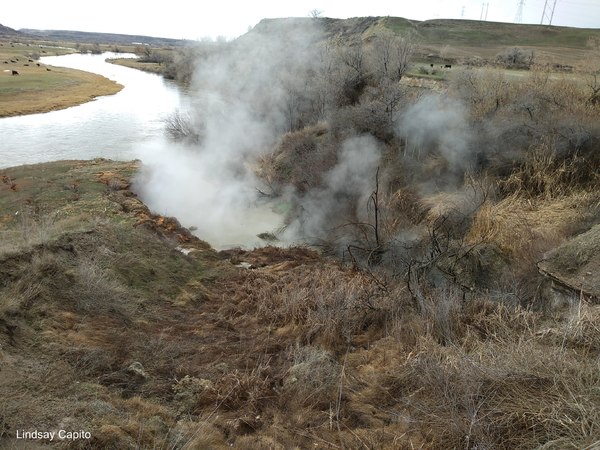Dublin Core
Title
Description
The Northwestern Band of the Shoshone Nation traveled to specific areas across the Mountain West to harvest resources offered by the changing seasons. They called the earth their mother and she provided all they needed. They understood the delicate balance of living with nature and the pivotal roles played by the sky, earth, and water.
Winter was a time of physical and spiritual rejuvenation, a respite after the long hunting and gathering seasons. Each year, the Northwestern Band returned to the same location on the shores of Boa Ogoi – or Big River – to spend their winter months. Lush grasses drew game and nearby hot springs gave warmth. The landscape formed a gully that sheltered their winter camp from wind and snow. This natural weather barrier, plus adequate fuel, ensured cozy teepees and content people. Often called “the elder’s time,” winter at Boa Ogoi was the season to share stories and wisdom passed down from one generation to the next.
The Northwestern Band of the Shoshone called their winter camp Moson Kahni – meaning “home of the lungs” – because of the sponge-like rocks and the steaming hot spring along the river bank. Its central location amid Shoshone lands meant that Moson Kahni became the gathering place for different bands to hold meetings, compete in winter sports, and enjoy themselves. They played shinney – a game similar to hockey – as well as raced, danced, and used dried deer hides as sleds. The Shoshone camp at Moson Kahni hosted other bands from around the Mountain West for annual Warm Dance celebrations that drove out the cold of winter and hastened the warmth of spring. This gathering was a time to share news, visit relatives, and even arrange marriages.
The last Warm Dance at Moson Kahni was held in early January of 1863. Later that month, the way of life Shoshone people had known for hundreds of years was utterly upended. The U.S. Army attacked the camp, resulting in the deadliest massacre of Native peoples by federal troops in the American West. The Shoshone would not spend another winter on the banks of Boa Ogoi.Creator
Source
_______________
See Hyrum City Museum, exhibition file for Bear River Boa Ogoi: the River is Life, curated by Courtney Cochley, 2021; Sarah Klain, Mo-so-da Kahni: Home of the Lungs, accessed September 23, 2021; Darren Parry, The Bear River Massacre: A Shoshone History (Salt Lake City: By Common Consent Press, 2019); Mae Parry, “The Northwestern Shoshone,” in A History of Utah’s American Indians, edited by Forrest S. Cuch (Logan, Utah: Utah State University Press, 2010): 25-72; Virginia ColeTrenholm and Maurine Carley. The Shoshonis: Sentinels of the Rockies (Norman, OK: University of Oklahoma Press, 1964).

